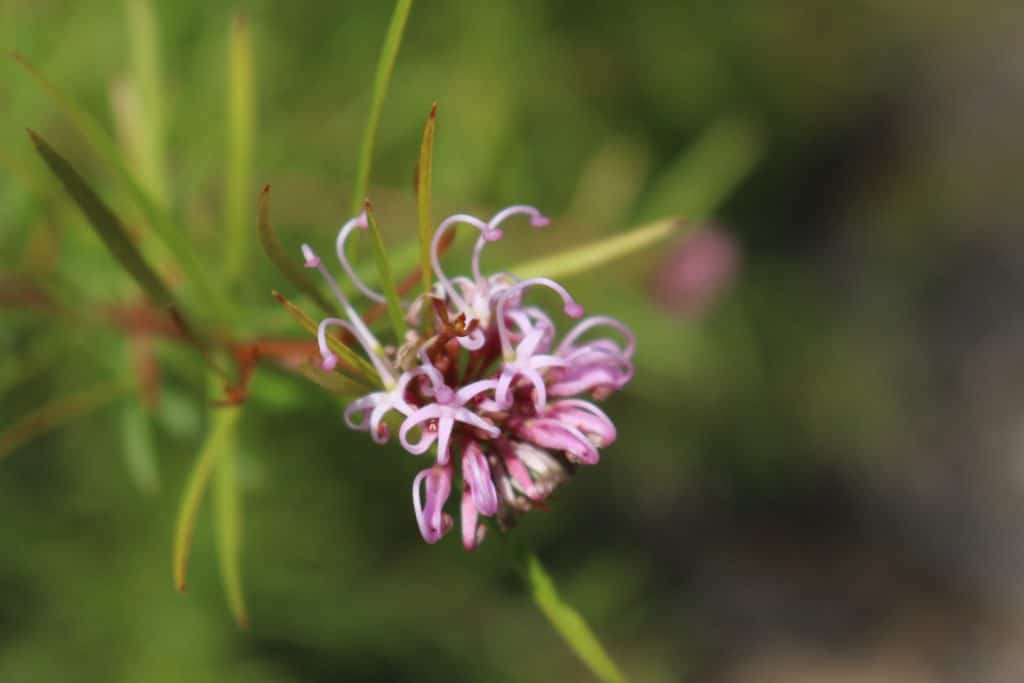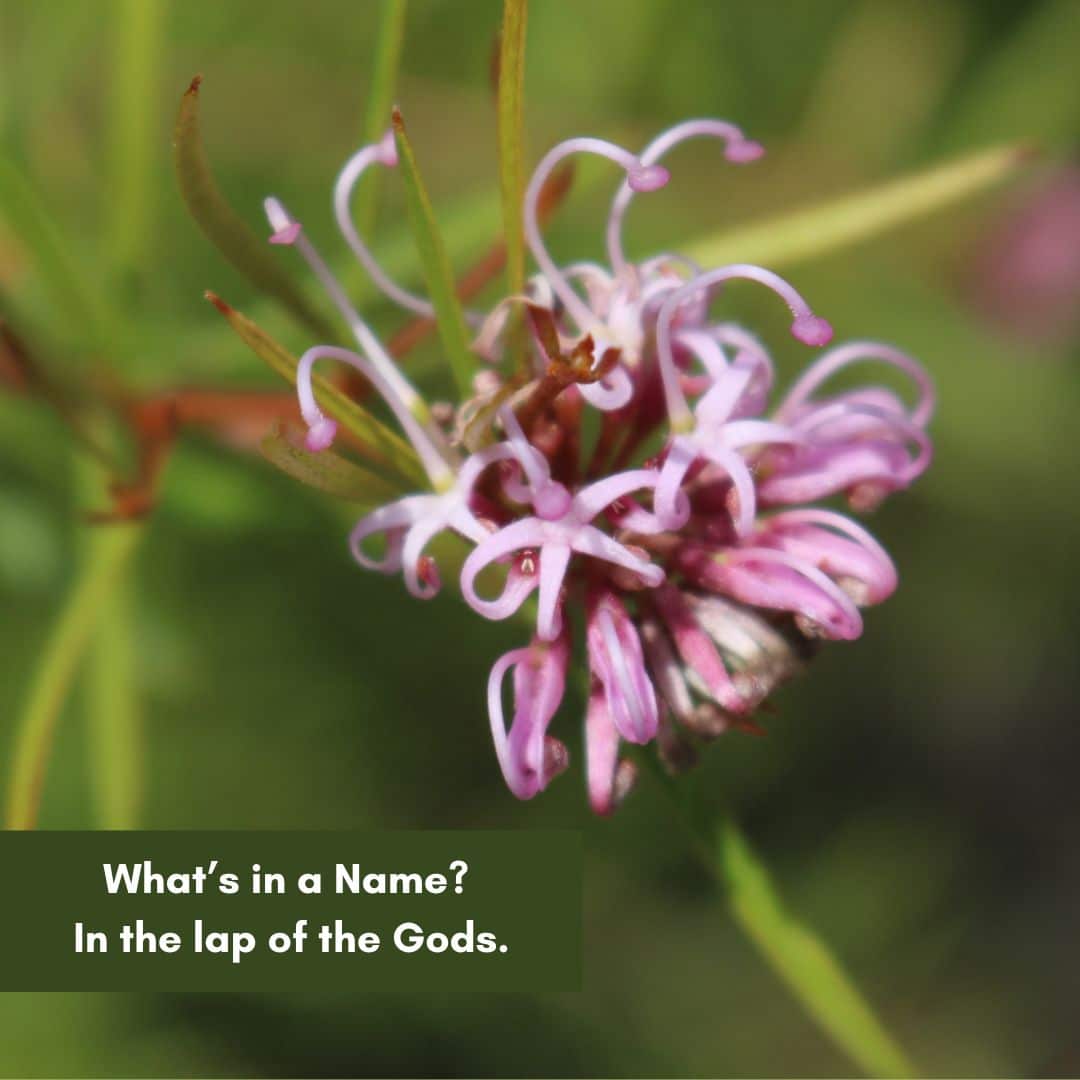One of the more common practices in botany and zoology is to name a species after a Greek or Latin god or figure of legend, here’s a few of them.
Grevillea sericea
Proteaceae, the botanical family containing South African Proteas as well as Australia’s Banksia and Grevilleas is named after Proteus, one of the gods of the sea and herdsman of seals, renowned for shape shifting and taking many different forms, which I suppose does describe the Proteaceae family.

Pandorea pandorana
Pandorea pandorana, so pretty they had to name it twice (as well as it’s common name of “Wonga Wonga Vine”), named after Pandora, according to ancient Greek legend, the first mortal woman created. You’d think it referred to the beauty of the flowers and of Pandora but no, it’s in reference to the seed capsule and Pandora’s Box, which she opened and released evil onto the world (Hmm, where have I heard similar?). It’s probably giving Pandorea pandorana a bad rap but when the capsule does open the seeds are scattered to the wind (and aren’t evil at all).

Chloris ventricosa
Chloris, the Windmill Grasses, a genus of native and overseas grasses (Chloris truncata, Chloris ventricosa, Chloris gayana), named after Chloris, Goddess of Flowers and nymph of the Islands of the Blessed, it seems a fairly bland way to be honoured but I suppose boring flowers need love too.

Chloris ventricosa (Photo: Paul Melehan)
DianellaDianella, which we have mentioned before was named in honour of Diana, a Roman goddess who was apparently quite busy looking after the moon, the hunt and the underworld, patron of hunters and protector of virgins.

Dianella fruit and flowers (Photo: Paul Melehan)

